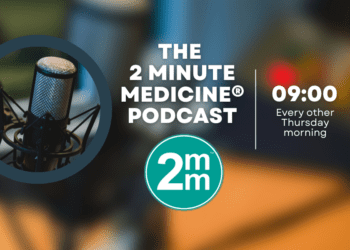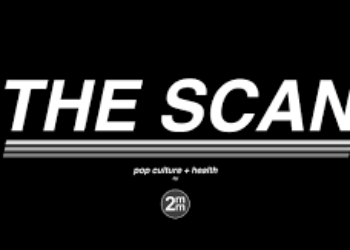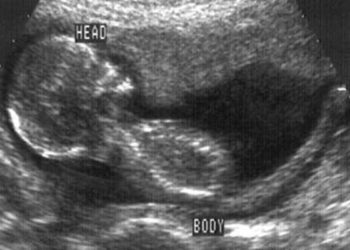Patient Basics: Autism (Autism Spectrum Disorder)
Originally published by Harvard Health.
What Is It?
Autism is a developmental disorder of the brain. People with autism have problems communicating and interacting socially. They also may have unusual patterns of behavior, interests and activities.
Doctors use the term autism spectrum disorder (ASD). This term includes the five kinds of autism.
The three main types of autism are:
- Classic autism
- Asperger’s syndrome — A milder form
- Nonspecific pervasive developmental disorder (PDD-NOS) — Describes children who don’t quite fit the criteria for the other types
There are also two rare autism disorders:
- Rett syndrome — Affects mostly girls. It includes problems with movement and speech, along with autistic features.
- Childhood disintegrative disorder — A severe type of autism. The child loses more physical, language and social skills than in classic autism.
Signs of autism spectrum disorder are typically first seen before a child’s third birthday. However, only half of children with autism are diagnosed before kindergarten.
Rett syndrome appears to be caused by a genetic mutation.
The causes of the other types of autism remain unknown. Various studies suggest that autism may:
- Be inherited
- Be caused by infection or the effects of an environmental toxin
- Result from a brain injury or abnormality that occurs in the womb or in early infancy
- Result from abnormal levels of chemicals messengers in the brain
Studies have found no link between vaccines and autism.
All types of autism except Rett syndrome are more common in boys than in girls.
Symptoms
At birth, a child with ASD often appears normal.
Symptoms may appear as early as the first year of life. But it may not be until the child is 2 or 3 years old that the parents realize something is not quite right.
Infants with autism spectrum disorder:
- May respond abnormally to being touched.
- Instead of cuddling when they are picked up, they may stiffen or go limp.
- May not show normal developmental behaviors during the first year of life. For example:
- Smiling at the sound of their mother’s voice
- Pointing out objects to catch someone’s attention
- Reaching out to others with their hands
- Attempting one-syllable conversations
- May not maintain eye contact
- May appear unable to distinguish parents from strangers
- Typically show little interest in others.
Symptoms vary from mild to severe.
Some behaviors associated with autism include:
- Disordered play — A toddler with ASD:
- Usually ignores other children and prefers to play alone.
- Usually does not engage in make-believe play.
- May spend hours:
- Repeatedly laying out objects in lines
- Sitting silently in an apparent trance-like state
- Concentrating on only one object or topic
Any attempt to divert the child can provoke an emotional outburst.
- Disordered speech — A child with ASD:
- Instead of saying, “I want a sandwich,” the child may ask, “Do you want a sandwich?”
- Repetitive behaviors — A child with ASD may perform repetitive behaviors:
- Clapping, finger snapping, rocking, swaying and hand flapping are common.
- Wanting to take the same route to school every day
- Turning around before entering a room.
- May not speak much or may remain silent.
- When the child does speak, the words may be an echo of what another person said.
- Speech patterns may be different.
- Repeating the same phrase or a particular motion
- Abnormal behaviors — Children with ASD may:
- Develop obsessive routines.
- Become intensely preoccupied with something
- Become hyperactive, aggressive, destructive or impulsive
- Intentionally injure themselves
Diagnosis
The diagnosis usually is made by specialists, and is based on:
- Your child’s developmental history over time
- Observations of your child’s behavior (alone and with others)
- Results of tests that evaluate your child’s:
- language skills
- motor coordination
- hearing
- vision
In some cases, tests will be ordered to check for other medical conditions that can look like autism.
Expected Duration
ASD is a lifelong condition.
Prevention
The causes of most types of ASD remain unknown. There is no way to prevent them.
Treatment
There is no cure for autism spectrum disorder. However, a child’s symptoms may improve with intense treatment.
Treatment generally includes education, behavioral management and medications.
Education
Educators develop an individualized education program to address the child’s specific problems. This typically includes speech and language therapy, social skills and life-skills training.
Behavioral management
The goal of behavioral management is to enhance appropriate behavior and reduce inappropriate behaviors.
Behavior modification strategies include positive reinforcement, “time out” and comprehensive behavioral interventions. Applied behavioral analysis (ABA) is a teaching approach that reinforces the practice of specific skills.
Medications
There is not one drug that treats all symptoms of autism effectively. Medications that may be considered include:
- Antipsychotic medications to reduce aggression, irritability and repetitive behavior. These medications also have unwanted side effects.
- Antidepressants to treat depression and repetitive behaviors.
- Anti-anxiety medications for anxiety-related behavior.
- Central nervous system stimulants to treat hyperactive or impulsive behavior.
Complementary medicine
Some people believe that changes in diet, herbal medicines, and other forms of complementary medicine can help autistic children. As of now there isn’t enough information to recommend them.
Some of these treatments can be dangerous or have side effects. Talk to your doctor about any treatment you may be considering.
When To Call a Professional
Call your doctor if your toddler:
- Does not try to communicate with others
- Repeats words or certain actions over and over again
- Does not seem to want to play with other children
Call your doctor right away if your child tries to injure himself or herself.
Prognosis
The difficult behaviors seen in autistic toddlers tend to improve between ages 6 and 10. Problems may resurface during the teen and young adult years. They eventually calm down again in middle and later life.
Some children with autism are able to live independently. Others may struggle to maintain normal social interactions, communication and behaviors.
Experts believe earlier ASD diagnosis and treatment leads to a better outcome.
Life expectancy depends on whether the person has other conditions and the person’s overall health.
Additional Info
Autism Society of America
7910 Woodmont Ave.
Suite 300
Bethesda, MD 20814-3067
Toll-Free: 1-800-328-8476
Phone: 301-657-0881
http://www.autism-society.org/




